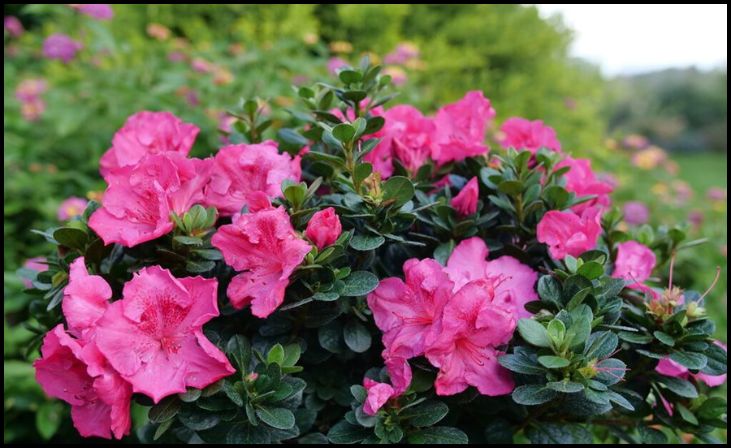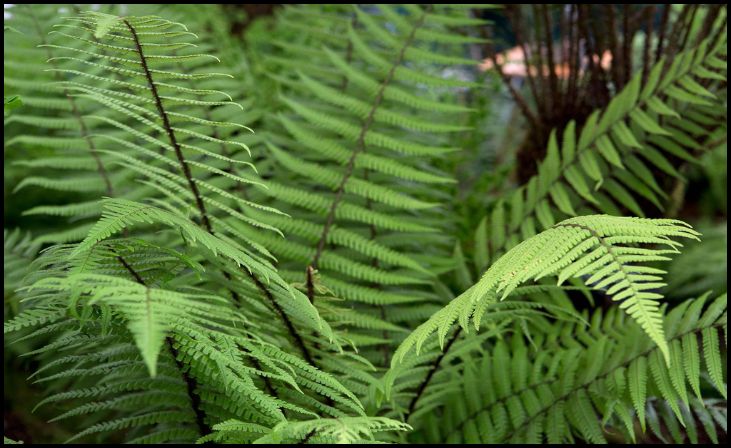Creating a lush, vibrant garden in a shady area can be a challenge, but it’s far from impossible. Many shrubs not only tolerate but thrive in low-light conditions, adding beauty, structure, and color to dimmer parts of your yard. Here are eight of the best shrubs for shade that require minimal sunlight to flourish.
1. Hydrangea

Hydrangeas are beloved for their large, showy flower clusters and are a classic choice for shady gardens. While some varieties prefer more sunlight, many hydrangeas, especially the mophead and lacecap types, thrive in partial to full shade.
Key Features:
- Flower Variety: Depending on the type, hydrangea flowers can be blue, pink, white, or even change color based on the soil pH.
- Size: They can grow anywhere from 3 to 10 feet tall and wide, making them versatile for different garden spaces.
- Maintenance: Regular watering is essential, especially during dry spells, to keep the soil moist but not waterlogged.
Benefits:
Hydrangeas not only add stunning visual appeal with their blooms but also provide a long flowering period from spring to fall. They work well as foundation plants, in borders, or even as focal points in shady garden spots.
2. Japanese Maple (Acer palmatum)
Japanese Maples are renowned for their delicate, lacy leaves and beautiful autumn colors. While they can grow in sunnier spots, they prefer partial shade, especially in hotter climates.
Key Features:
- Foliage: The leaves can be green, red, or variegated, providing year-round interest.
- Size: Typically, these shrubs grow to about 15-25 feet tall and wide, though dwarf varieties are available for smaller spaces.
- Care: They require well-drained, slightly acidic soil and benefit from mulching to keep the roots cool.
Benefits:
The Japanese Maple’s graceful form and stunning foliage make it a perfect choice for adding elegance and color to shaded garden areas. They are ideal for use as specimen plants or in mixed borders.
3. Rhododendron
Rhododendrons are another excellent option for shady gardens, known for their large, vibrant flowers and glossy green leaves. They are especially suited to woodland gardens.
Key Features:
- Blooms: Flowers range in color from pink, red, purple, to white, blooming in spring.
- Size: These shrubs can vary greatly in size, from compact varieties of 3 feet to large bushes up to 15 feet tall.
- Soil: They prefer acidic, well-drained soil and benefit from mulching.
Benefits:
Rhododendrons are highly decorative and can create a striking display in a shaded garden. They attract pollinators like bees and hummingbirds, adding to the biodiversity of your garden.
4. Azalea

Closely related to rhododendrons, azaleas are another fantastic shrub for shaded areas. They are appreciated for their stunning blooms and ability to thrive in low-light conditions.
Key Features:
- Flowering: Azaleas produce a profusion of flowers in various colors, including pink, red, white, and purple, typically in spring.
- Size: They can range from 1 to 6 feet tall, suitable for both small and large garden spaces.
- Maintenance: They prefer well-drained, acidic soil and require regular watering to keep the soil moist.
Benefits:
Azaleas are versatile and can be used in various garden settings, such as borders, containers, or foundation plantings. Their vibrant flowers brighten up shaded areas and attract pollinators.
5. Camellia
Camellias are prized for their beautiful, rose-like flowers and glossy evergreen foliage. They are well-suited to shaded gardens, particularly in regions with mild winters.
Key Features:
- Bloom Time: Depending on the variety, camellias can bloom from fall to spring.
- Flowers: The blooms come in shades of white, pink, and red, often with a striking, waxy texture.
- Growth: These shrubs can grow 6 to 12 feet tall and 5 to 10 feet wide.
Benefits:
Camellias provide year-round interest with their evergreen leaves and extended blooming period. They are ideal for use as hedge plants, foundation plantings, or in mixed borders.
6. Boxwood (Buxus)
Boxwoods are classic, versatile shrubs that perform well in shaded areas. They are often used for hedges, topiary, and as structural elements in the garden.
Key Features:
- Foliage: Boxwoods have small, dense, evergreen leaves that provide a neat, formal appearance.
- Size: They can vary from 1 to 20 feet tall, depending on the variety and pruning.
- Care: These shrubs prefer well-drained soil and regular watering, especially during dry periods.
Benefits:
Boxwoods are highly adaptable and can be shaped into various forms, making them excellent for formal gardens and topiary. Their evergreen foliage ensures they provide year-round structure and interest.
7. Mahonia
Mahonia, also known as Oregon grape, is a hardy evergreen shrub that thrives in shaded conditions. It is notable for its holly-like leaves and bright yellow flowers.
Key Features:
- Blooms: Clusters of yellow flowers appear in late winter to early spring, followed by blue-black berries.
- Foliage: The leaves are glossy, spiky, and evergreen, adding texture to the garden.
- Size: Mahonia can grow 3 to 10 feet tall and wide.
Benefits:
Mahonia is particularly valued for its winter interest, providing color and food for birds with its berries. It’s a great choice for woodland gardens and shady borders, offering a unique texture and year-round appeal.
8. Ferns

While not technically shrubs, ferns deserve a place on this list for their ability to thrive in full shade and add a lush, green backdrop to shaded gardens.
Key Features:
- Foliage: Ferns are known for their delicate, feathery fronds that come in various shades of green.
- Variety: There are many types of ferns, from the tall ostrich fern to the compact maidenhair fern, offering options for different garden sizes.
- Care: They prefer consistently moist, well-drained soil and benefit from mulching to retain soil moisture.
Benefits:
Ferns are perfect for adding a soft, natural look to shaded garden areas. They combine well with other shade-loving plants and can be used as ground cover, in borders, or as filler plants in woodland gardens.
Conclusion
Shaded areas in your garden need not be barren and uninspiring. With the right selection of shrubs, you can create a lush, colorful, and vibrant space that thrives even with minimal sunlight. Hydrangeas, Japanese Maples, Rhododendrons, Azaleas, Camellias, Boxwoods, Mahonias, and Ferns each bring unique beauty and benefits to shaded gardens. By incorporating these shrubs, you can transform your shady spots into captivating and serene garden retreats.

